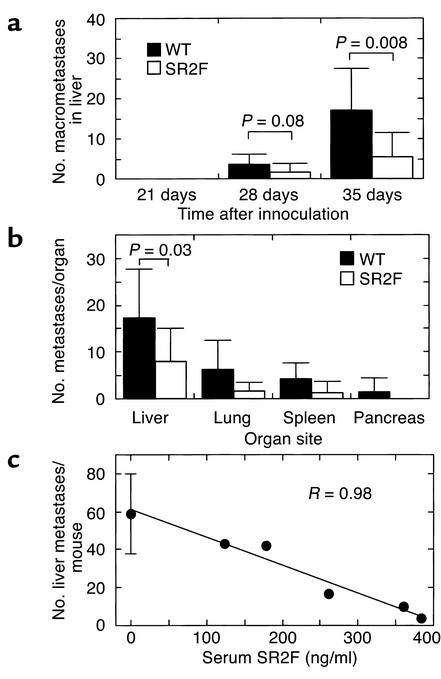Figure 3.
Effect of SR2F on metastatic efficiency in a tail-vein injection assay. (a) Macroscopically detectable liver metastases at different times after inoculation. Wild-type or transgenic (SR2F) mice were injected in the tail vein with 106 isogenic 37-32 melanoma cells. After 21, 28, and 35 days, mice were necropsied and the number of macroscopically visible metastases on the liver surface was quantified. The 21-day timepoint had five mice per genotype group, while the remaining timepoints had ten mice per genotype group. (b) Effects on metastatic efficiency in different internal organs. The number of histologically evident metastases was quantified in all tissues that showed evidence of gross metastases in mice necropsied at 35 days after inoculation. Two representative cross sections of each lobe were assessed for the liver and a single representative cross section was analyzed for other organs. Ten mice were used per genotype group. (c) Dose dependency of SR2F effect on metastatic efficiency. In a replicate experiment of the one described in a, the number of histologically detectable metastases in representative cross sections of the liver were quantitated and plotted against the circulating SR2F levels, as measured by sandwich ELISA on serum prepared at necropsy. The data for the wild-type cohort (0 ng/ml SR2F) are presented as mean ± SD (n = 4). R represents the correlation coefficient for the linear curve fit.

